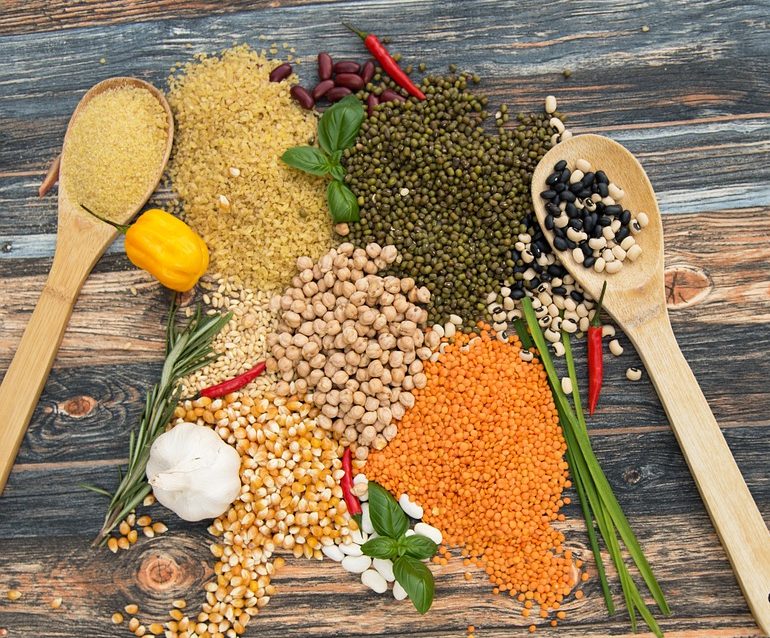Protein is a necessary part of our diets and is part of every cell in the body. Our bodies use it to build, maintain and repair muscles, tissues, organs, and it is a building block for bones, skin, and blood. Even hair and nails are made of protein. Many people get the protein they need from animal sources like meat, cheese, dairy products and eggs. But, did you know you can get plenty of protein from plant sources, too? Plant-based proteins are an affordable and sustainable addition to your kitchen, and it’s easy to add them to recipes when animal proteins aren’t available. There are hundreds of ways to prepare them and you can get really creative!
Legumes (also called pulses), like beans, lentils, chickpeas and peas, are full of nutrition and are free of sodium, fat, and cholesterol. They are an excellent source of dietary fiber, a good source of iron and folate, and they provide enough lean protein for our bodies to function. They have a long shelf life and are easy to keep on hand to cook in a pinch. What’s not to love?
If you didn’t grow up eating legumes, it can be challenging to try something new – especially if you’ve never cooked them from a dry state. Below are cooking tips from USA Pulses for cooking four types of popular legumes from dry. Don’t worry, canned beans, lentils, and chickpeas are all just as good for you as if you cooked them from dry – just make sure to rinse them to remove some sodium.


